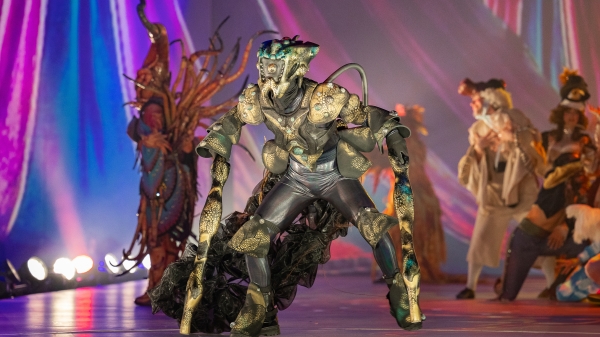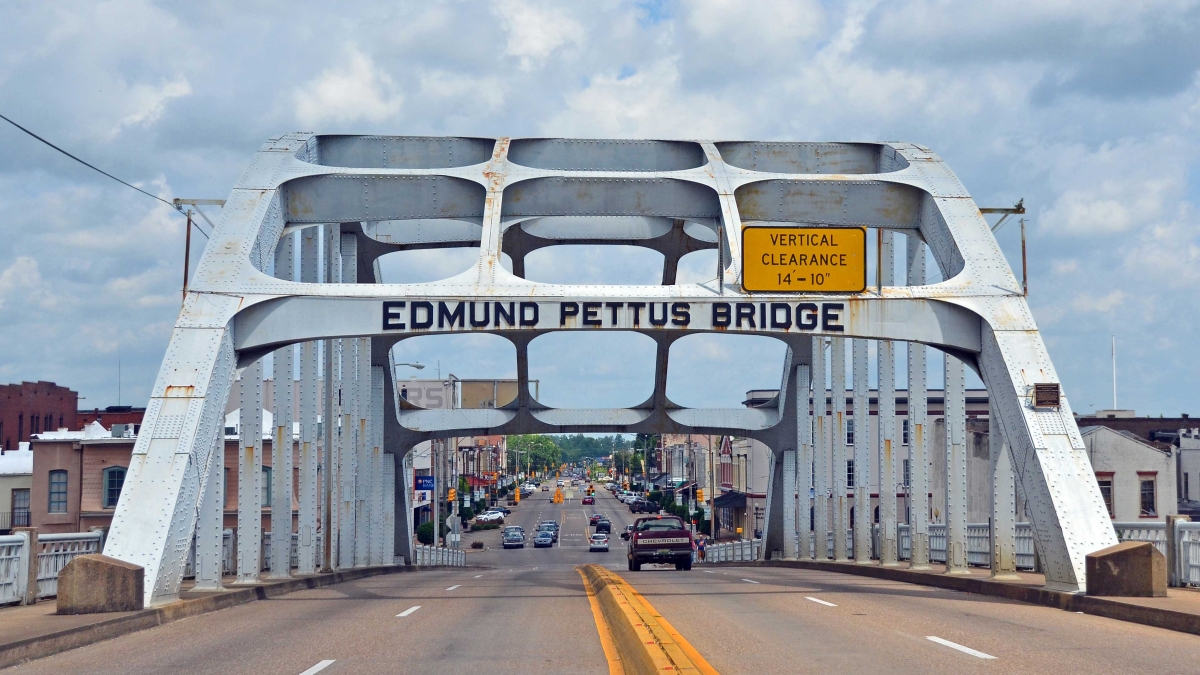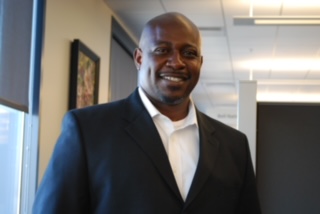Think of the civil rights movement in the United States and several names come to mind.
Martin Luther King Jr. Rosa Parks. John Lewis.
Their stories, you know.
Curtis Austin
Curtis Austin, an associate professor of history in Arizona State University’s School of Historical, Philosophical and Religious Studies, believes it’s important that the men and women who served both on the front lines and in the background of the civil rights movement have their stories told.
To that goal, Austin, along with Matthew Barr, a professor at the University of North Carolina in Greensboro, are collaborating on an oral history and book project titled “The Unsung Heroes of the Civil Rights Movement.”
Austin said he and Barr already have conducted 40 interviews and hope to have nearly 200 oral histories available and archived on a website through ASU’s Hayden Library by Christmas, with the book published late in 2023.
ASU News talked to Austin, who recently was named one of 11 new fellows for the 2022–23 school year by ASU’s Institute for Humanities Research, and is currently traveling the country conducting interviews for the projectHis travels have been paid in part by funding he received from the Institute for Humanities Research..
Editor's note: Responses have been edited for lenght and clarity.
Question: What prompted the interest in these unsung heroes?
Answer: We know that people like Rosa Parks and Fannie Lou Hamer, Malcolm X and Martin Luther King Jr. made significant contributions to the Black freedom struggle, but what we don’t often realize is that a lot of times, these were speech-makers. They were influencers and speakers but not so much the foot soldiers who actually had to integrate the lunch counter or the high school or the neighborhood, or do any number of things that the civil rights movement called on them. These people’s stories have rarely been told, and we wanted to look at the folks who in our minds did the actual work of the movement.
The other thing is that the movement happened, depending on when you start counting, 60 years ago. So most of these individuals were teenagers or young adults, and they are leaving us really quickly. And we wanted to capture these stories before they were gone. We are interviewing police officers, judges, politicians, Klan members — believe it or not — to try to get a comprehensive telling of what unfolded during that period.
Q: Have you found that your interview subjects have been enthused or reluctant about revisiting that time?
A: It’s a mix. Some will say, “I don’t have anything to say.” Or, “I heard you talked to such and such. I don’t have anything to add.” Or they don’t believe their story has value. There are people who, because of their work in the civil rights movement, think it’s dangerous to talk about. They might have done something that law enforcement might consider a crime and they don’t want to discuss the issue. So it takes quite a bit of persuasion and cajoling. Sometimes, it takes up to a year to get them to open up. There are also people who can’t wait to talk. They’ll say, “I’ve been waiting for you to call all my life.”
What all of these people have in common is once they start talking, they realize how good it is for their own well-being because they’ve been keeping these things inside for decades. That’s not helpful. We have to talk about our traumas. If you were beaten or went to jail or were evicted from your home or lost your job, any number of things that happened to you because of your civil rights activity, that is traumatic, and to hold that kind of thing in can cause irreparable harm. What we found is when people start talking, it’s really difficult to get them to stop. Because they want to unload.
Q: You mentioned you spoke to Klan members. Have you found that the passage of time has changed their views?
A: They are almost always the same people. But on occasion, we come across people whose views have changed, and both of those are equally interesting.
Q: Are they reluctant to talk to an African American?
A: Absolutely. There typically is quite a bit of resistance. On the other hand, when my white colleagues interview Klan members, the answers to the questions are quite different.
Q: In what ways?
A: They’re much more expansive and much more open. If there was something that might be considered a crime, they’re much more likely to share that than they would be with me or another person of color. But with my white colleagues, it’s kind of like, “We’re on the same team here.”
Q: As a Black man, how do you emotionally process some of the stories you hear?
A: Personally, it doesn’t affect me as much as it might someone else. I grew up Black and male in Mississippi, so I’ve had quite a bit of experience with these thoughts, ideas and behaviors. It doesn’t surprise me, because as a young kid, as a teenager, as a young man, I saw it every day. It’s really difficult to shock me. Unfortunately, it’s an expectation, especially in the South. But it’s less about what we think and how we feel than it is about their stories. If they are open enough with us to want to tell their stories, we’re happy to give anybody all the leeway they want, because what’s important is the history is shared with upcoming generations.
Q: Who is one of these unsung heroes?
A: One of the people who comes to mind is a white guy whose name is Buford Posey. He has the distinction of being the first white person in Mississippi to join the NAACP. Buford came from a — I’m not going to say wealthy family — but a real well-to-do family, and while his parents weren’t Klan members, they leaned in that direction. And most of his extended family were Klan members. He was an exception to that…
In 1964, something happened called the Freedom Summer in Mississippi. Thousands of students, most of whom were white, were coming in from universities in the north and east to get Blacks to register to vote. Because what had been happening is that African Americans had been registering people to vote and they were being jailed, run out of the state or being killed. The leaders of the movement thought that if white people were doing this work, that wouldn’t happen. And, in fact, it didn’t happen, except in Philadelphia, Mississippi.
A group of Klan members murdered James Chaney, Andrew Goodman and Michael Schwerner in June of 1964. And Buford Posey knew some of his family members were involved in the murder. I don’t know where you’re from, but in a small town like Philadelphia, everyone knows what everyone else does. The Klan members shot up Posey’s house and ran him out of the town. They told him if he called the FBI he was going to get the same thing the three civil rights workers got. But he continued to push the issue. And that’s how the investigation got started, because Buford Posey just wouldn’t shut up. So, he’s an unsung hero. The people who were arrested and tried … that wouldn’t have happened if Buford Posey had not done what he did.
Q: I would imagine there’s hundreds of stories like that you can mine for this project.
A: I teach the history of the civil rights movement, and there are as many white people involved as there are Black. We don’t get that from the documentaries and movies and textbooks. That’s one of the problems this project is trying to solve. Scholars and historians have made it a Black-and-white thing and a North-and-South thing. It wasn’t like that at all. White people were just as involved in the civil rights movement, and Northerners were just as involved as Southerners. We want to dispel those kinds of myths, and stories like Buford Posey’s help us do that.
Learn more about Austin’s project during an event at 5 p.m. Oct. 19 in the Memorial Union, Pima Room, at the Tempe campus. Austin will speak about the "Unsung Heroes" project, accompanied by a performance with the Phoenix Boys Choir.
Top image: The Edmund Pettus Bridge in Selma, Alabama, was the site of the "Bloody Sunday" conflict on March 7, 1965, when police attacked civil rights movement demonstrators as they were attempting to march to the state capital. Photo courtesy Clément Bardot/Wikimedia Commons
More Arts, humanities and education

ASU alumna makes her way back to the ASU Gammage stage for '¡azúcar!'
As the Los Angeles-based CONTRA-TIEMPO dance group prepares for its upcoming production “¡azúcar!” at ASU Gammage, for one member of the dance group it is also a nostalgic return to her home.Born in…

ASU FIDM professor wins international award for fantastical, sustainable creation
The horror of an ailing Earth inspired an Arizona State University fashion professor to create a fantastical garment out of sustainable, re-used and found materials that won a prestigious…

ASU workshop trains educators, professionals from marginalized communities in disaster science
As devastating as hurricanes can be to anyone caught in their paths, they strike marginalized communities even harder.To address this issue, a fund named for a former Arizona State University…

